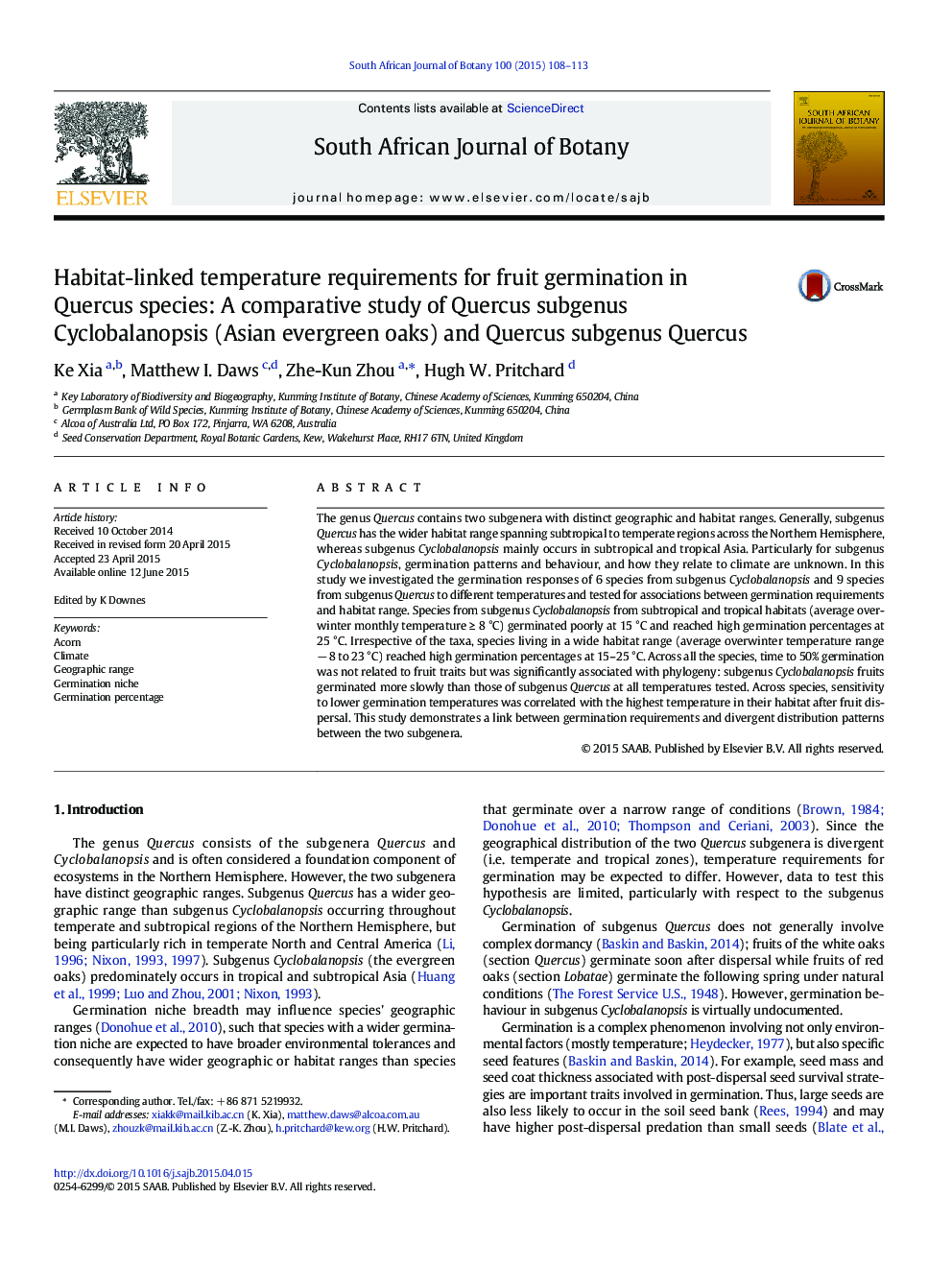| Article ID | Journal | Published Year | Pages | File Type |
|---|---|---|---|---|
| 4520379 | South African Journal of Botany | 2015 | 6 Pages |
•The 2 subgenera in the genus Quercus have distinct ranges in the N Hemisphere•Subgenus Cyclobalanopsis mainly occurs in subtropical and tropical Asia and subgenus Quercus occurs widely in subtropical and temperate regions•We compared temperature effects on germination of the two subgenera•Species with a wide habitat range germinated across a wide range of temperatures.•Subgenus Cyclobalanopsis fruits germinated slower than those of subgenus Quercus
The genus Quercus contains two subgenera with distinct geographic and habitat ranges. Generally, subgenus Quercus has the wider habitat range spanning subtropical to temperate regions across the Northern Hemisphere, whereas subgenus Cyclobalanopsis mainly occurs in subtropical and tropical Asia. Particularly for subgenus Cyclobalanopsis, germination patterns and behaviour, and how they relate to climate are unknown. In this study we investigated the germination responses of 6 species from subgenus Cyclobalanopsis and 9 species from subgenus Quercus to different temperatures and tested for associations between germination requirements and habitat range. Species from subgenus Cyclobalanopsis from subtropical and tropical habitats (average overwinter monthly temperature ≥ 8 °C) germinated poorly at 15 °C and reached high germination percentages at 25 °C. Irrespective of the taxa, species living in a wide habitat range (average overwinter temperature range − 8 to 23 °C) reached high germination percentages at 15–25 °C. Across all the species, time to 50% germination was not related to fruit traits but was significantly associated with phylogeny: subgenus Cyclobalanopsis fruits germinated more slowly than those of subgenus Quercus at all temperatures tested. Across species, sensitivity to lower germination temperatures was correlated with the highest temperature in their habitat after fruit dispersal. This study demonstrates a link between germination requirements and divergent distribution patterns between the two subgenera.
